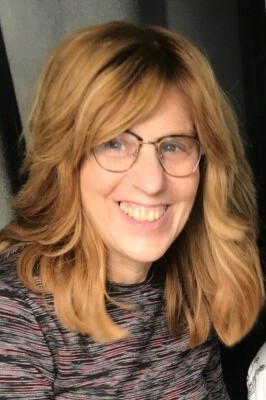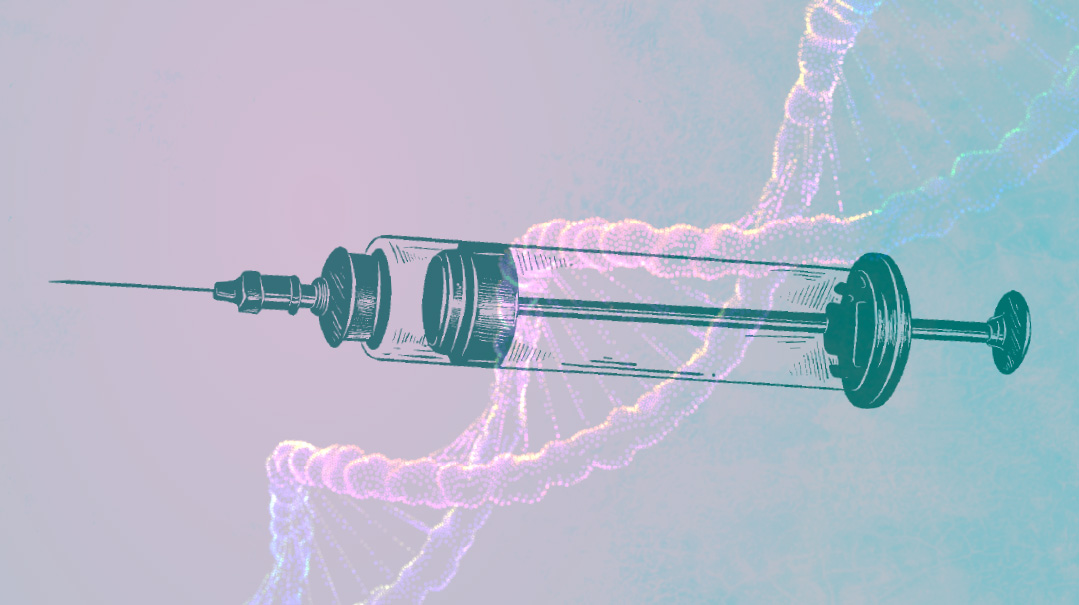On Trial

Are clinical trials a viable option when no other treatment is bringing results? When her vision suddenly deteriorated, one woman had to make that decision

Dina was 29 years old when she noticed her vision starting to deteriorate. She’d greet someone by name, only to find she’d mistaken them for someone else. Reading became difficult, and she needed a handheld magnifying glass or a magnifying lamp to read anything that wasn’t in very large print. “I’d been wearing glasses since I was nine months old, so I was no stranger to vision problems,” Dina says. “But as long as I wore my glasses, I could see fine. Now I noticed my vision becoming cloudy and blurry. I also started having problems judging distances, especially while driving.”
It all came to a head when Dina underestimated the space between her car and the one in front, and plowed right into it. Baruch Hashem, neither she nor the other driver was hurt, but she was badly shaken up. “I realized then that something was seriously wrong with my vision, and I had to do something about it,” Dina says.
But when one eye doctor after another wasn’t able to help, Dina decided to consult with her primary care physician. Her PCP doctor sent her for blood work, and when everything came out normal, recommended she see a neuro-ophthalmologist.
“There were two neuro-ophthalmologists on my insurance plan,” says Dina. “The one closer to my home wasn’t taking new patients, and the second one, in a different state, had a three-to-four-month wait time for new patients. I couldn’t wait that long. My eyesight was worsening, and I was feeling desperate. I decided to check myself into the emergency room at Wills Eye Hospital in Philadelphia, Pennsylvania where the neuro-ophthalmologist I was waiting to see was based. I figured they’d have to treat me straight away if I came through the ER.”
Turns out Dina was partially right. The ER doctors did do a full exam but couldn’t work out what was wrong and sent her home. The upside though was that hospital protocol requires that any patient checked in through the ER must be seen again for a follow-up within the next three weeks. Instead of a three-to-four-month wait, now Dina only had to wait three weeks to see the neuro-ophthalmologist.
At the first visit, the neuro-ophthalmologist ran tests to rule out vitamin deficiencies and a more serious but rare eye disorder known as Leber Hereditary Optic Neuropathy (LHON), a progressive genetic condition affecting the optic nerve, which leads to the gradual loss of eyesight, ultimately resulting in blindness.
During Dina’s follow-up visit to discuss her test results, the neuro-ophthalmologist asked her: “Do you want the good news first or the bad news?”
The good news, he continued, was that it wasn’t a tumor or terminal illness causing Dina’s vision loss. The bad news was that while she wasn’t going to die from it, she did have LHON, which meant she’d eventually go blind.
“I was definitely relieved to hear I didn’t have a fatal disease,” Dina says, “but I have to admit, the idea of eventually becoming stone-blind didn’t make me feel a whole lot better.”
But right after this devastating prognosis, the neuro-ophthalmologist gave Dina the hopeful news that there was a clinical trial for gene therapy underway at the hospital for LHON. Gene therapy for Dina’s condition would mean injecting the correct DNA sequence attached to a benign virus into the weaker eye. The goal is for the virus to infect the retinal ganglion cell with the correct DNA sequence. Though the Wills Eye team had already accepted the maximum number of people allowed for the trial, the neuro-ophthalmologist assured Dina he’d do everything in his power to get her in.
“It was too late for me to get into the trial,” says Dina. “But sometimes the FDA will allow an unapproved trial drug to be used on a ‘compassionate use basis’ for a small number of people who need it. Baruch Hashem, my doctor applied to the FDA, and I (along with nine others) was approved.”
Clinical Trials
Mark L. Moster, MD, a neuro-ophthalmologist at Wills Eye Hospital and professor of neurology and ophthalmology at Thomas Jefferson University in Philadelphia, Pennsylvania, explains that the purpose of a clinical trial is to help find safe, effective, new ways to prevent, detect, or treat diseases. “Clinical trials usually take place in three phases,” Dr. Moster says. “Phase One and Phase Two are for testing small groups of people to show that the drug is safe, and see if it may be effective, essentially, to get the signal that this drug might work. Phase Three, however, is the main testing stage. It’s where we test it out on a larger group of people, and it’s what the FDA will base their approval on.”
Prior to the three phases are the preclinical or laboratory studies that involve cell studies and animal studies. Cell studies are often the first tests done on a new treatment. To see if it might work, researchers look for the effects of the new treatment on mutated cells that are grown in a lab dish or a test tube. These studies may be done on human cells or animal cells.
Depending on varying factors, Dr. Moster explains, epidemiologists and statisticians will figure out how many people are necessary to participate in a trial to show that it works statistically. For example, the Phase Three LHON clinical trials were conducted worldwide on 200 people. Of those, 46 people were from Wills Eye Hospital. A Phase Four trial may be performed after receiving FDA approval, and typically involves studying different aspects of the medication, trying out different doses, and/or investigating the possibility of various side effects.
“Dina presented with the classic symptoms of a young person with rapid visual loss affecting the optic nerve in a certain way,” says Dr. Moster. “Once my partner, Dr. Sergott, did the genetic testing, the diagnosis was confirmed.”
He explains that in addition to genetic testing, the team will also take a family history to find the genetic link. “It’s always passed down through the mother, so we’ll ask about the immediate family, and then go back to the mom’s siblings and her mother’s family.”
In Dina’s case, she’d never heard of Leber’s Hereditary Optical Neuropathy before, and certainly did not know of any cases in her family. “It was only when my diagnosis was confirmed that I discovered my mother had a second cousin who suffered from the same condition and had gone blind at age eighteen,” says Dina.
“Finding the volunteers for the trial wasn’t difficult,” Dr. Moster says, “because as a reputable eye hospital, we are the address for those with serious eye ailments. However, since LHON is a rare disease, we typically only see about five patients a year with it. Nevertheless, for the trial, people came to us from all over the world. We even had someone from Malaysia. It took him 30 hours including three plane changes to get to us.”
Considerations
The neuro-ophthalmologist informed Dina that the experimental medication used for the gene therapy, called Lumevoq, wasn’t covered by insurance. But since it was still in the trial stage, however, the company producing the injection would cover all expenses. This was a good thing, the neuro-ophthalmologist explained, because had the medication already been approved by the FDA, the cost of the gene therapy would be in the neighborhood of $500,000. (In general, gene and cell therapy are so costly because producing, handling, and controlling the cells or viral vectors required to make them is much more complicated than working with the chemicals used to make traditional pharmaceuticals.)
Also, initially, Dina’s neuro-ophthalmologist had obtained a cheek swab for genetic testing, which cost $800. This, too, was not covered by insurance. But after writing a letter to the government insurance commissioner of her state explaining why the test was necessary and requesting they cover the cost, they fortunately agreed to do so.
With the financial aspect of the treatment taken care of, all that Dina and her husband needed to worry about now was whether the risks of joining a trial outweighed the benefits. After all, it was just a trial, and they’d done very few trials on this condition. As with any clinical study, the outcome could go either way. Some participants, they were told, might experience improvement, while others might remain the same or even worsen. “Clearly, I was being used as a guinea pig,” Dina says, “but really, what choice did I have?” So while she was nervous about being part of an experimental study, at the same time, it was the only hope she had of regaining her vision. They decided to proceed.
Into the Future
“Though I was now officially accepted, I still had to wait for the Wills Eye team to let me know when the treatment was scheduled to start. For months I kept calling to remind them that I existed; all the while my eyesight was deteriorating. It got to the point that even with the magnifying lamp, I had to repeatedly check my recipes to make sure I was using the correct ingredients.
“Finally, less than a week before Pesach, I got my appointment for the shot that would change my life. I remember my husband and I booked a hotel room the night before because we had to be in the hospital early in the morning,” says Dina.
In the months that followed her injection, Dina almost immediately began to notice subtle positive changes. She was required to visit the trial doctors regularly during the first year, but over time, her appointments were reduced in frequency. After a few months, her eyesight had significantly improved, and her glasses prescription changed.
“My vision continues to improve steadily,” she says. “With my glasses I now have 20/20 vision in one eye, and while the other eye has a higher prescription, it’s well within normal range. My night vision still is not as good as it was. And even though I’ve been cleared for driving, because of my accident I’m still afraid to go on busy streets where there are no red lights. And I still don’t drive at night.”
Dina’s treatment plan includes five years of annual follow-up visits, and she’s currently in her third post-shot year. These visits offer her a chance to monitor her vision and address any concerns right away, also providing valuable data for researchers.
“Happily, Dina achieved outstanding results in the trial, surpassing most of the other participants who experienced positive outcomes,” claims Dr. Moster. “On average, the participants gained four or five lines on the eye chart. Dina moved up almost ten lines, progressing from being almost legally blind to regaining nearly complete eyesight.”
Although Dina’s eyesight has mostly returned to its pre-symptom state, the long-term effects and potential future developments of the treatment remain uncertain as the trial is ongoing.
The shot hasn’t yet been authorized for widespread use outside of the trial setting. Dr. Moster explains that, interestingly, the trial drug’s success unexpectedly impeded FDA approval. The original plan was to inject one eye with the medication and compare its eyesight to the non-treated eye. The primary outcome was supposed to be vision improvement in one eye compared to the other eye.
However, in all cases where there was improvement, both eyes improved. Since the primary outcome was not met, the FDA is unwilling to approve the treatment. To scientifically measure the effects, another trial must be conducted with some participants receiving gene therapy, and a control group receiving a placebo.
Yet despite the unknowns, Dina remains forever grateful to Hashem for placing her in the right place at the right time, giving her the chance to participate in this clinical trial, and ultimately restoring her vision.
Is It for Me?
Choosing to participate in a clinical study is an important personal decision. The first step is — speak to your doctor! The doctor knows your medical history and prognosis for your disorder. Your doctor may not know about available clinical trials, so you, the patient and/or your family might have to do the initial research.
Websites like ClinicalTrials.gov, WHO.int (World Health Organization), FDA.gov, and NIH.gov (including hlbi.nih.gov) provide up-to-date information about clinical research studies to patients, families, caregivers, and healthcare professionals. This includes study summaries, recruitment status, eligibility criteria, study locations, and contact information. The National Institutes of Health (NIH) also supports various types of clinical trials through its institutes and centers.
After identifying an appropriate trial, the next step is for your physician to contact the research staff and ask questions about the study on your behalf and then together review what he or she has learned. Before joining a government-approved clinical trial, you will always receive detailed information about the study, what exact procedures you’ll be undergoing, how much time you’ll be spending on aspects of the study, and any other relevant information. To further ensure participant safety, FDA-approved third-party committees called Institutional Review Boards (IRBs) review study protocols. There are also other national and international standards that protect participants and help produce reliable study results.
Once a person wants to go forward, says Dr. Moster, they’ll call the number and speak to the clinical coordinator, who will ask relevant questions to find out if there’s anything that might exclude him from participating. For example, if the person is on blood thinners, they can’t get a needle in the eye. The difficulty of getting into a particular clinical trial is influenced by various factors, such as the disease’s prevalence, the level of demand from interested individuals, and other variables.
In addition to individuals with incurable diseases seeking the latest treatment and specialized care from clinical trial staff, healthy volunteers may also choose to participate in clinical trials. Their motivations often include a desire to contribute to society, assist family members or potential future generations who may be affected by a genetic condition, and contribute to advancements in scientific knowledge. By participating, healthy volunteers aim to make a positive impact on the well-being of others and help drive progress in medical research.
(Originally featured in Family First, Issue 854)
Oops! We could not locate your form.







